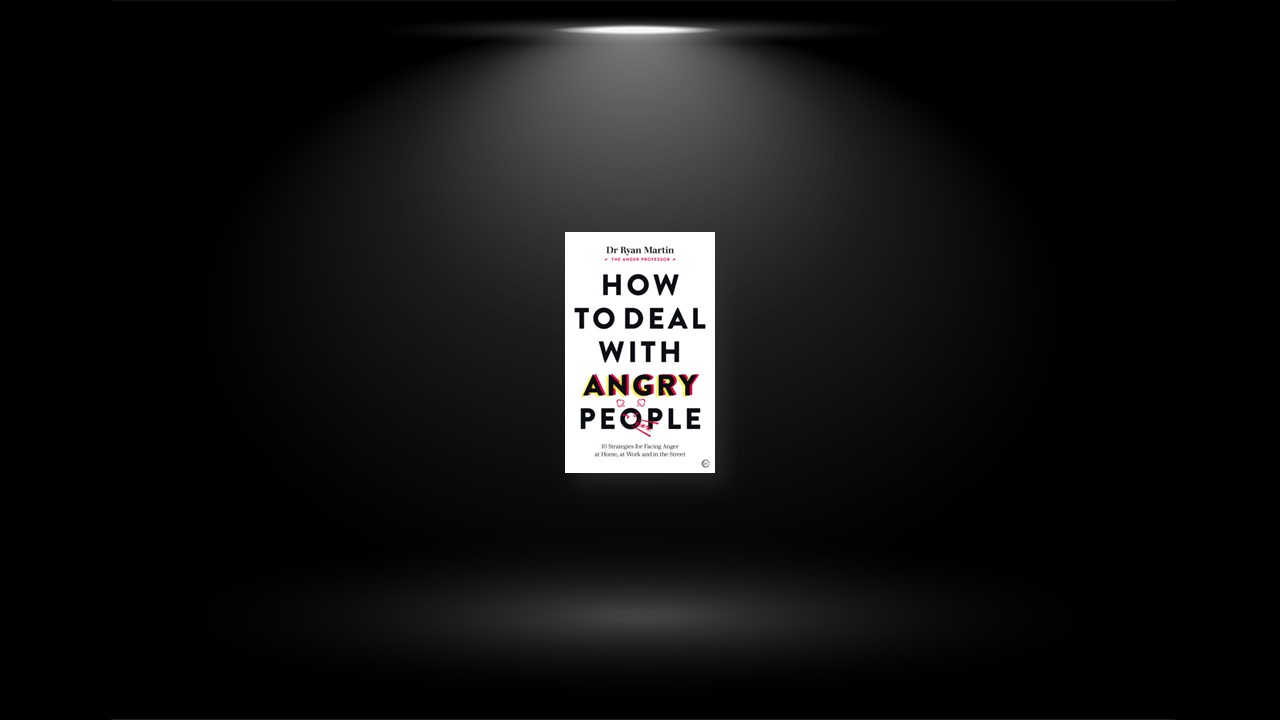Work Out What You Really Want
One of the best things we can do when someone is angry with us is figure out what our goals are for the situation. What is the outcome we want and how do we get there? This is applicable in fairly brief interactions like a dispute on the road or in more complex situations like the one above or those involving co-workers, friends, or other family. Before we react, we should give ourselves a chance to pause and assess the situation to decide how we can get to the outcome we want.
Taking time in moments to think about your desired outcome can be really difficult. By definition, these are emotionally charged situations and we’re not always thinking clearly. What we want to do in these situations might be different from what we need to do to get to the outcome we desire. Instead of focusing on our goals, we often focus instead on getting back at the person. We follow our knee-jerk reaction for revenge, instead of slowing down and being strategic. There is a reason for this instinct, by the way, and like a lot of things related to our emotions, it’s rooted deep in our DNA.
Keep Your Cool
A common claim is that a way to “release” our emotions in these moments is to punch things, break things, scream, or even exercise.* This is such a common claim, in fact, that “rage rooms” have cropped up across the world as places for people to go and work through their anger by breaking things.
It is a well-established fact that this approach to anger reduction doesn’t work. It might feel good in the moment but it does not help alleviate those negative emotions. In fact, study after study reveals that such approaches make our emotions worse in the long run. People who use catharsis to deal with negative emotions are more aggressive after that catharsis and more likely to want to harm.
The same goes for exercise, which is often surprising to people. Here, though, the devil is in the details. Exercise is good for your emotional wellbeing overall. That is well established. People who exercise regularly have a healthier emotional life. Exercise improves mood and helps people manage their anxiety. But that doesn’t mean you should exercise during an emotional episode or as a way to calm down from an emotional episode. When you are in the midst of an emotional experience (such as anger, fear, even intense sadness), exercise can exacerbate those negative feelings through something called excitation transfer.
So if a lot of people’s go-to for calming down, catharsis/exercise, isn’t good for them, what does work?
Make it a Core Value
Most important, you need to embrace the desire to stay calm in these situations as an intentional life strategy. It is exceedingly difficult in the moment to decide you want to stay calm. Everything about the situation is screaming for you to emote, so deciding not to in the midst of the actual situation is nearly impossible. For this reason, you should make the decision to stay calm in advance of the situation.
Find (or Create) a Pause
Even if you’ve decided you want to be (or are) the type of person who stays calm in these moments, it can still be exceptionally difficult to catch yourself when you start to escalate. When someone gets angry with you and you start to match that anger with your own escalated emotion, it can be easy to forget your intention to remain calm. One strategy for dealing with this is to identify a “pause button” in your mind.
As soon as you become aware of your escalation, make an effort to remind yourself of who you want to be in these moments. Pause, even if it means ignoring the person you are interacting with for a moment, to find some inner peace before you continue.
Deep Breathing
There is a wonderful video floating around social media right now of a six-year-old helping his four-year-old brother calm down with some breathing exercises. The description says that the younger brother was about to have a tantrum and his older brother was helping him work through it. It is adorable It is also just a perfect example of how we can use deep breathing to calm ourselves down.
Remember That Anger Can Look a Lot of Ways
Physical or Verbal Aggression
Physical and verbal aggression is what anger seems most known for. Some people express their anger by trying to harm someone or something either through physical means (hitting, pushing, shooting) or through abusive and cruel statements. They might give someone the finger while driving or scream obscenities at someone who slowed them down.
Sulking or Withdrawal
Perhaps the opposite of physical and verbal aggression are those people who express their anger by withdrawing from others or even going off to pout. This is something you might see in people who are deeply avoidant of conflict. They feel angry but because they don’t feel comfortable expressing that anger, even in a positive and prosocial way, they withdraw from people, especially those they are angry with.
Slightly different from sulking or withdrawal, there are some who simply deny their anger feelings… maybe even to themselves. They might tell you they are “fine” despite some very real feelings of frustration and irritation.
Sarcasm
Dr. Clifford Lazarus, a well-known and respected clinical and health psychologist, once said “sarcasm is actually hostility disguised as humor. While I’m not sure this is always the case, there is definitely some truth here. Sarcasm can indeed be motivated by anger in that people will use it to deal with mild or major frustrations they experience. Their computer crashes and they respond with “Well that’s just great.” Someone asks if they need help with something that they are obviously struggling with and they respond with “No, I’m really enjoying this.”
Crying
people cry for quite a few reasons that aren’t directly related to sadness. They cry when they experience physical pain, when they are scared, when they are happy, or even when they are empathizing with another person’s emotions. Ultimately, tears are a communication tool. They signal to the people around you that you are in distress or feeling some intense emotions. You can think of crying as a primal help-seeking behavior that exists because it offered an evolutionary advantage to our ancestors. Those who signaled distress this way were more likely to get help and therefore more likely to survive.
So what does this mean in the context of dealing with angry people? A few things: No One Uses the Same Expression Style All of the Time. People Do Have “Go-To” Expression Styles. Pay Attention to Where it Might Be Coming From.
Ask Whether the Anger is Justified
Don’t Let Their Anger Make the Decision for You
Sometimes, we unintentionally let another person’s emotions dictate our own feelings of culpability or guilt. We think that because the other person is mad at us, we must have done something wrong. Try to avoid thinking and feeling that way. Other people’s anger is not necessarily an indicator of our mistake. It might mean that we have made an error, but there are plenty of times when other people are simply wrong and their feelings toward us are not justified. They may have misinterpreted the situation or they may be overreacting. Frankly, they may be using their anger as a weapon and gaslighting you. You need to separate their reaction to what you did from what you actually did.
Evaluate What You Did and the Impact on Them and Not Why You Did It
You will sometimes hear people say, “I realize it came across as mean, but I was just trying to…” and then they fill in that blank with a justification of whatever they did. Obviously, for our own emotional wellbeing, growth, and development, that justification matters. It’s good for us to unpack the various factors that influence why we do the things we do. But from the perspective of the other person who is mad at us, what we were trying to do or why we did it doesn’t really matter that much. What matters most is what we did and the impact it had on them.
What we really need to ask ourselves is “Did I treat them poorly or unfairly?” or “Did I somehow unreasonably block their goals?” Regardless of what motivated it, did my actions harm them by making them feel badly, taking away an opportunity, or slowing them down. If so, their anger is justified.
Know When to Disengage
There’s no easy answer to this question of when we should disengage. It’s considerably easier, though, when we’re talking about one-off interactions that happen with strangers than when we’re talking about long-term relationships. In these sorts of single-episode interactions with an angry person
would suggest disengaging as soon as one of three things happens: (1) you no longer feel safe, (2) interacting with this person is not good for you, or (3) you realize that a resolution is unlikely or impossible. If you are worried about your safety, you should disengage immediately and get to safety. If you don’t think the interaction has a chance of being productive any longer, you should find a way to end it and move on.
angry people may be intertwined in our lives in ways that make disengaging exceedingly difficult. How you choose to relate to an angry boss is different from an angry spouse or an angry parent. Decisions about cutting off a friendship with a lifelong friend might be different than those involving a more recent acquaintance. There are many factors to consider here. Unlike most one-off interactions, there may be real consequences of disengaging that you have to factor in.
That said, it’s also worth noting that disengaging doesn’t necessarily mean cutting off all contact. It can look a lot of different ways. It can mean disengaging altogether and no longer being part of the person’s life, but it can also mean spending less time together, interacting less often, or even limiting those interactions to specific ways of communicating or specific venues.


